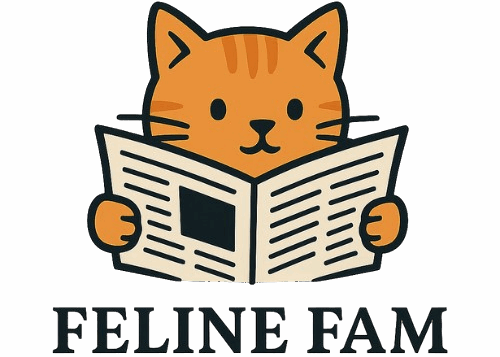Having both cats and dogs living harmoniously under one roof can be a beautiful thing. Yet, not all feline companions are designed to share their space with canine roommates. Some cat breeds carry strong territorial instincts, unpredictable temperaments, or behavioral traits that make coexistence with dogs challenging or downright impossible.
The wrong choice could lead to stress for both pets, constant conflicts, and an unhappy home environment. Understanding which cat breeds might clash with your dog’s personality could save you months of behavioral issues and heartache. Let’s explore the feline personalities that might not play nice with your four-legged family members.
Turkish Van: The Fierce Territorial Guardian

Turkish Vans can display aggression towards people and other cats, making them a challenging companion for dog households. This breed has earned its reputation as one of the most aggressive cat varieties.
The Turkish Van prefers to be the only cat in the household and needs proper socialization as a kitten to prevent territorial behavior when strangers enter the home. Their strong desire for dominance often extends beyond just other cats to include dogs as well.
Siamese: The Demanding Drama Queen

Siamese cats can be territorial and demanding, being a couple of breeds more predisposed to aggression. Their intense personality can quickly overwhelm a peaceful dog-cat relationship.
These vocal felines demand constant attention and rarely appreciate sharing their owner’s affection with another pet. Their jealous streak runs deep, and they often view dogs as unwelcome competition rather than potential companions.
Bengal: The Wild Child

Bengals are a mix of Asian Leopard Cat and housecat with their wild nature still showing through, and they can develop behavioral issues like territorial spraying or extreme play aggression if their basic needs are not met. Their high energy requirements make them unsuitable for many households.
They have more needs than other cats, including a lot of exercise, and if you’re looking for a low-maintenance lap cat, the Bengal cat is not the one for you. This intensity often translates into conflicts with calmer dog companions.
Scottish Fold: The Sensitive Attention Hog

Scottish Folds are quite sensitive to change and may become aggressive when new pets are brought home, they’re also not the friendliest toward babies and children, and they don’t like to share attention. Their adorable appearance masks a surprisingly possessive personality.
Although they are not as outwardly aggressive, they do have a feisty side if left on their own too much. This neediness can create tension when dogs naturally seek their own share of family attention.
Pixie Bob: The Growling Guardian

Pixie Bobs are very suspicious of strangers and you will probably hear them growling at strangers when they visit your home, while not violently aggressive, this cat will let you know how they are feeling with their unique vocals. Their intimidating communication style can stress sensitive dogs.
Despite their wild appearance, they are a large breed who are very strong, and if they are playfighting, they will throw their full weight around, which can put people off. This rough play style rarely meshes well with gentler canine companions.
Sphynx: The Hyperactive Attention Seeker

Sphynxes are hyperactive cats that need plenty of playtime and are incredibly intelligent, but high intelligence coupled with low stimulation could result in a Sphynx that lashes out of boredom, requiring constant entertainment to avoid aggressive tendencies. Their demanding nature leaves little room for sharing attention with dogs.
This hairless breed’s need for constant stimulation and interaction makes them poor candidates for homes where a dog might compete for their owner’s time and energy.
Egyptian Mau: The Resource-Guarding Beauty

While they appear gentle with loved ones and even shy with strangers, the Egyptian Mau may become a bit mean if you try to take their food or toys. This possessive behavior over resources can quickly escalate into conflicts with curious dogs.
Having high intelligence means that they tend to lash out when they are bored. A bored Egyptian Mau in a household with an energetic dog often leads to territorial disputes and stress for both animals.
Bombay: The Fearful Fighter

The Bombay cat breed looks dark and mysterious like a jaguar, but this breed is much more affectionate and unlike wild cats, the Bombay is a bit sensitive, often startled by loud noises and sudden noises in general, and might lash out in fear when it hears a noise that startles them. Dogs naturally create the kind of sudden movements and sounds that trigger Bombay anxiety.
They are known to be both fearless and aggressive and have a litter box aversion, requiring a significant amount of attention, which when not met, can come out in aggressive tendencies. This combination makes peaceful coexistence with dogs nearly impossible.
Korat: The Jealous Ruler

Korats like to be the one-and-only pet and can be territorial and bossy toward other pets in the home. Their regal attitude doesn’t allow for sharing their kingdom with canine subjects.
It generally gets along with other animals, but has a tendency to become jealous when other pets receive too much love from its owner. This jealous streak often manifests as aggressive behavior toward innocent dogs simply seeking affection.
Singapura: The Noise-Sensitive Miniature

They can spook if they hear an unexpected loud noise so keep that in mind if you have a dog that likes to bark. While generally friendly, their sensitivity to noise makes them incompatible with vocal or active dogs.
Singapuras are also a little sensitive to loud noises, so make sure dogs aren’t barking too aggressively as this might make this breed a little uncomfortable. Though they may get along with well-behaved dogs, most household dogs produce the exact sounds and energy levels that stress these tiny cats.
The Bottom Line: Choose Wisely for Harmony

Creating a peaceful multi-pet household requires careful consideration of each animal’s personality and needs. These ten cat breeds, while wonderful companions for the right families, present unique challenges when paired with dogs.
Remember that individual cats within any breed can vary significantly in temperament. Early socialization, proper introductions, and understanding each pet’s boundaries can sometimes overcome breed tendencies. However, if you’re looking for the smoothest path to a harmonious dog-cat relationship, these breeds might be worth avoiding.
What’s your experience with cats and dogs living together? Have you ever dealt with a territorial feline that just couldn’t accept their canine housemate?





